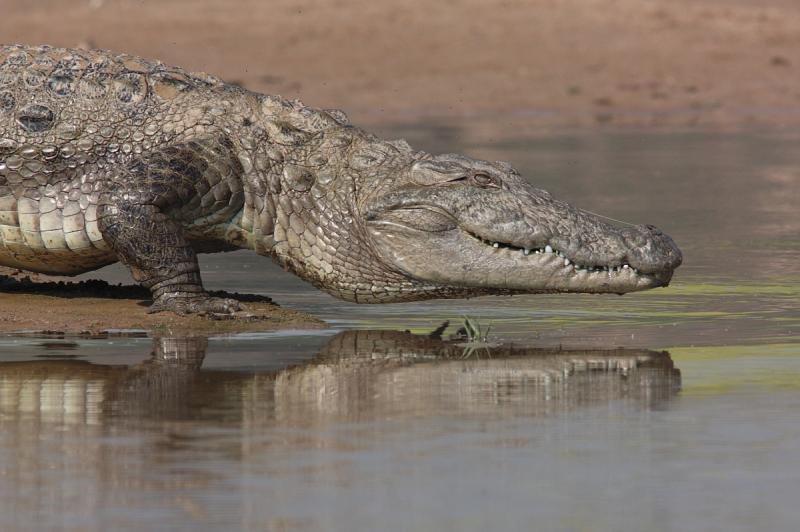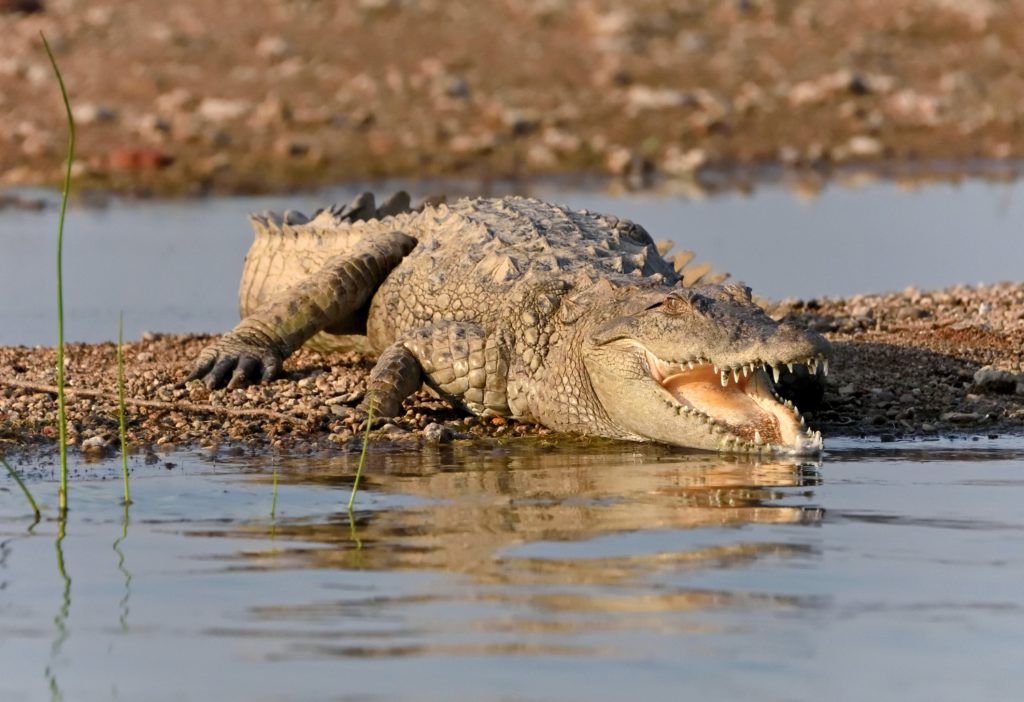Swamp Crocodile (Crocodylus palustris), also known as maggar,- one of the most adapted representatives of the crocodile family. It lives in freshwater bodies of South Asia and is a the only crocodile species found in India, Pakistan, Nepal, Bangladesh, Sri Lanka and Iran.
As opposed to aggressive crested crocodile, a swamp crocodile has a more relaxed characterHowever, it remains a dangerous predator. He powerful jaws, excellent endurance and the ability to stay underwater for a long time they make it one of the most effective hunters among reptiles.
This article will reveal features of the structure, range, behavior, diet, threats to the population and interesting facts about the swamp crocodile.

Scientific classification
🔬 Classification of the swamp crocodile:
✔ The Kingdom: Animals (Animalia)
✔ Type: Chordal (Chordata)
✔ Class: Reptiles (Reptilia)
✔ Row: Crocodile-like (Crocodylia)
✔ Family: Crocodile trees (Crocodylidae)
✔ Gender: Crocodiles (Crocodylus)
✔ View: Swamp Crocodile (Crocodylus palustris)
📌 Interesting!
The name "Maggar" comes from the Hindi word मगर (magar), which means "water monster”.
Appearance and features
💠 Description of the swamp crocodile:
• Sizes: Adults reach 2.5–3.5 m, sometimes up to 4.5 m.
• Weight: On average 200-250 kgalthough the largest males can weigh about 450 kg.
• Colour: Dark olive or brownish-green with spots that help disguise themselves in the water.
• Muzzle: Broad, rounded, shorter than the snout of a crested crocodile.
• Scales: Large, coarse, with pronounced bony plates on the back.
• Eyes and nostrils: Located on the top of the head, which allows the crocodile to stay invisible in the water.
📌 Interesting!
Swamp crocodile has the strongest bite among all reptilessecond only to the crested crocodile.
Habitat range
🌍 Where does the swamp crocodile live?
* Inhabits India, Pakistan, Nepal, Sri Lanka, Iran, Bangladesh and southern regions of Afghanistan.
* Prefers freshwater bodies of water - rivers, lakes, swamps, reservoirs, rice fields.
* Avoids salty waters, unlike the crested crocodile.
* Known for being able to live in caves and underground reservoirs in arid areas.
📌 Interesting!
This species has adapted to seasonal climate changes: during droughts digs deep holes in the groundwhere it can remain for several months in a state of slow metabolism.

Behavior and lifestyle
🔹 Territoriality and social behavior
* Males are very territorial divisions but they can fight fiercely for water bodies.
* During the Maggary drought season they can live in groupswhich is unusual for most crocodiles.
* Known ones more relaxed behaviormore aggressive than crested crocodiles, but can be aggressive during breeding or nest protection.
🔹 Hunting and nutrition
• Basic diet:
✅ Fish
✅ Amphibians
✅ Small mammals
✅ Birds
✅ Reptiles (including smaller crocodiles)
* Hunts from ambush, stealthily swimming up to the victim.
* Uses "death turn" (death roll) to break large production.
• Can attack cattlewhich creates conflicts with farmers.
📌 Interesting!
Maggars sometimes they cooperate when huntingdriving fish to shallow water.
Reproduction and development
💡 How does the swamp crocodile breed?
* Mating season continues from January to March.
* The female digs a nest near the water and lays 25-40 eggs.
• Incubation lasts 65-90 days, and the temperature determines the sex of babies.
* Young people stay with their mothers a few monthsby getting protection from predators.
📌 Interesting!
The mother can carry the cubs in her mouth for safety reasons!

Threats to the species and their protected status
⚠ What threatens the swamp crocodile?
• Destruction of the natural environment because of the expansion of agriculture.
• Poaching "hunters used to kill Maggars for their skin and meat.
• Conflicts with people - because of attacks on livestock, they are often destroyed by farmers.
🛡 Security status:
, Is in the list Vulnerable (VU) species according to the IUCN classification.
✅ Protected in national parks of India, Pakistan and Sri Lanka.
✅ Underway captive breeding programs.
📌 Interesting!
Thanks to protection measures in India, the population of Maggars steadily growing.
Conclusion
Swamp Crocodile – a unique representative of crocodiles, which has adapted to different ecosystems of South Asia. It's there an important predator in natureby regulating fish and amphibian populations.
Although this view is less aggressive than the crested crocodile, it is still a dangerous predator that it can attack people and pets.
💡 Thanks to conservation measures, the swamp crocodile has a chance of survival.